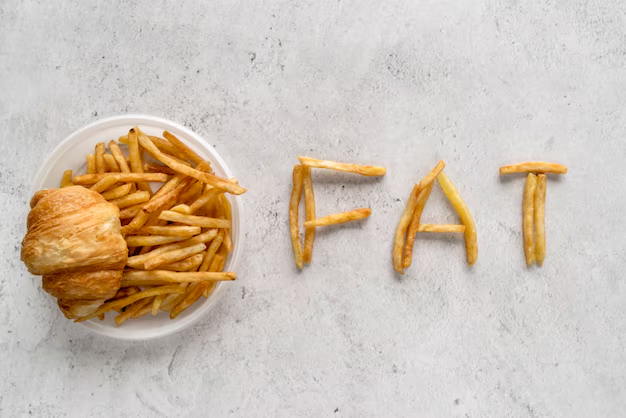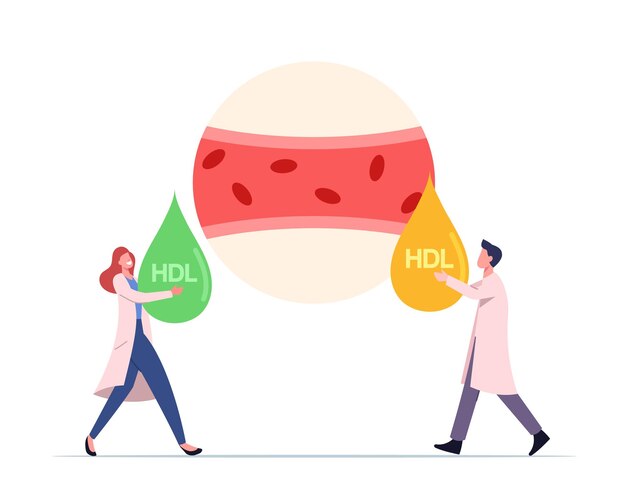Cholesterol is a vital substance your body needs to function properly. However, not all cholesterol is the same. LDL is the bad cholesterol that can build up in your arteries, leading to health problems. Frequent consumption of fast food can lead to elevated LDL cholesterol, putting your heart health at risk. So, is fast food bad for cholesterol? Let’s explore the effects of fast food on cholesterol and ways to manage its impact.
Effects of Fast Food on Cholesterol Levels
Fast food is often loaded with saturated fats and trans fats. These harmful fats contribute significantly to increasing LDL cholesterol.
Saturated Fats: A Major Culprit
Saturated fats, found in items like cheeseburgers and pizzas, raise your LDL levels. When consumed excessively, these fats interfere with the liver’s ability to regulate cholesterol. This can lead to a dangerous buildup in your bloodstream.
Trans Fats: The Silent Threat
Trans fats, used in fried and processed fast foods, are even worse. They not only increase LDL cholesterol but also decrease HDL cholesterol. This double whammy heightens the risk of clogged arteries.
Frequent Fast Food Consumption
Eating fast food regularly magnifies these effects. Over time, cholesterol levels can spike, leading to severe health issues. Studies show that a diet rich in fast food significantly raises the risk of heart-related problems.
Fast Food and Heart Disease Risks
High cholesterol is one of the leading causes of heart disease. Fast food consumption plays a direct role in this chain of events.
Plaque Buildup in Arteries
Excess LDL cholesterol gets deposited in your artery walls. This creates plaques that narrow the arteries, reducing blood flow to the heart and other organs.
Scientific Evidence
Numerous studies confirm the link between fast food and cardiovascular issues. Research published in the Journal of the American Heart Association found that people who frequently eat fast food have a higher risk of heart disease due to elevated cholesterol levels.
A Cycle of Poor Health
High cholesterol from fast food doesn’t just affect the heart. It can lead to obesity and diabetes, further worsening heart health. Addressing these risks is essential to avoid long-term damage.
Saturated Fats and Trans Fats in Fast Food
The fats in fast food come from specific ingredients and cooking methods. Understanding these sources can help you make better choices.
Fried Foods: A Hidden Danger
French fries, fried chicken, and onion rings are loaded with both saturated and trans fats. The oils used in frying are often hydrogenated, making them particularly harmful.
Processed Ingredients
Fast food items like pastries, cookies, and pizza crusts often contain trans fats. These fats improve shelf life but harm your health.
Impact on Cholesterol
The combination of saturated and trans fats directly affects your lipid profile. Even one meal high in these fats can spike cholesterol levels temporarily. Over time, the cumulative effect is dangerous.
Impact of Fried Foods on Cholesterol

Fried foods are a staple in fast food menus but are some of the worst offenders when it comes to cholesterol.
Examples of Cholesterol-Heavy Foods
- French Fries: Often fried in oil that’s reused multiple times, leading to an increase in trans fats.
- Fried Chicken: Coated and deep-fried, adding layers of unhealthy fats.
- Onion Rings: A batter-fried item that’s deceptively high in fat content.
How Frying Increases Risk
When foods are deep-fried, they absorb a significant amount of oil. This boosts their calorie count and fat content, making them particularly bad for cholesterol.
To Read: Is Fast Food Bad for Weight Loss? Healthy Alternatives
Lowering Cholesterol After Fast Food
If you’ve indulged in fast food, don’t worry—there are steps you can take to minimize the damage.
Hydrate and Exercise
Drink plenty of water to flush out excess sodium. Light exercise, like walking, can help manage cholesterol spikes.
Foods That Help
Incorporate these cholesterol-lowering foods into your next meal:
- Oats: Rich in soluble fiber, they help reduce LDL cholesterol.
- Nuts: Walnuts and almonds are excellent for boosting HDL cholesterol.
- Fruits and Vegetables: Apples, berries, and leafy greens are full of antioxidants and fiber.
Limit Future Intake
Practice mindful eating. Opt for grilled options instead of fried and choose smaller portion sizes. By making healthier choices, you can enjoy occasional fast food without compromising your health.
Cholesterol-Friendly Meal Options and Fast Food Alternatives
Making smarter choices at fast food chains can help minimize cholesterol impact. Additionally, creating homemade versions of your favorite fast foods can be a game-changer for your health.
Healthier Swaps at Popular Fast Food Chains
- McDonald’s: Opt for a grilled chicken sandwich instead of a cheeseburger. Choose apple slices over fries.
- Burger King: Go for the Impossible Whopper, a plant-based option, and skip the mayo to cut unhealthy fats.
- Subway: Build a sandwich with whole-grain bread, turkey, and extra veggies while avoiding high-fat dressings like ranch.
- Starbucks: Swap a croissant or muffin for oatmeal with nuts and fruit toppings.
Homemade Fast Food Alternatives
- Air-Fried Chicken Strips: Use lean chicken breast coated in whole-grain breadcrumbs. Air fry for a crispy texture without added oils.
- Veggie Burgers: Make patties from lentils, black beans, and oats for a heart-healthy twist. Serve on whole-grain buns with avocado.
- Baked Sweet Potato Fries: These are rich in fiber and much healthier than traditional fries. Season with spices for flavor.
Making these simple swaps ensures you still enjoy the taste of fast food while keeping your cholesterol in check.
Diet for Managing High Cholesterol

A cholesterol-friendly diet can lower LDL levels while boosting HDL, supporting overall heart health.
Sample Cholesterol-Friendly Meal Plan
- Breakfast: Oatmeal topped with fresh berries, chia seeds, and a drizzle of honey. Pair it with green tea.
- Lunch: Grilled salmon salad with leafy greens, cherry tomatoes, cucumbers, and a lemon vinaigrette.
- Snack: A handful of walnuts or almonds.
- Dinner: Quinoa with sautéed spinach, roasted sweet potatoes, and a lean protein like turkey or tofu.
- Dessert: Fresh fruit or a piece of dark chocolate.
Key Foods to Include
- Oats and Barley: Rich in soluble fiber that absorbs LDL cholesterol.
- Fatty Fish: Salmon, mackerel, and sardines provide omega-3 fatty acids that improve HDL levels.
- Nuts: Walnuts and almonds help reduce bad cholesterol.
- Vegetables: Leafy greens like spinach and kale actively lower cholesterol levels.
By sticking to this plan, you can actively combat the effects of cholesterol-heavy fast food.
Exercise to Combat Fast Food Cholesterol Effects
Exercise is a powerful tool for managing cholesterol. It helps improve HDL levels and burns off excess fats from fast food.
How Exercise Helps
- Boosts HDL cholesterol, which removes LDL from your arteries.
- Improves overall heart health and circulation.
- Helps maintain a healthy weight, reducing cholesterol risk factors.
Quick Workouts Post-Fast Food Meals
- Brisk Walking: A 30-minute walk can improve digestion and reduce LDL buildup.
- High-Intensity Interval Training (HIIT): A 20-minute HIIT session burns calories and boosts cardiovascular health.
- Yoga: Low-impact poses like Sun Salutations or twists improve circulation and detoxification.
Consistency is key. A combination of aerobic and strength-training exercises works best for long-term cholesterol management.
What Are the Worst Foods for High Cholesterol?
Certain fast foods are notorious for their negative impact on cholesterol levels.
Top Offenders on Fast Food Menus
- Fried Chicken: Packed with saturated and trans fats due to deep-frying in unhealthy oils.
- Cheeseburgers: Loaded with saturated fats from cheese and fatty meat.
- Milkshakes: High in cholesterol due to whole milk, cream, and added sugars.
- Pastries: Doughnuts, croissants, and muffins are high in trans fats and sugar.
- French Fries: A staple side dish with high-fat content due to deep frying.
Avoiding these foods, or at least limiting their consumption, is crucial to keeping your cholesterol levels under control.
FAQs
1. Can I eat fast food if I have high cholesterol?
Yes, but limit your intake. Opt for healthier menu items like grilled chicken and avoid fried or processed foods.
2. What fast food is cholesterol-friendly?
Fast-food chains offer better options for salads with lean protein, whole-grain wraps, and oatmeal. Avoid high-fat dressings and sauces.
3. Is KFC high in cholesterol?
Yes, KFC’s fried chicken is high in cholesterol due to its deep-frying process and batter. Grilled chicken is a better alternative.
4. Is McDonald’s high in cholesterol?
Many McDonald’s items, like cheeseburgers and fries, are high in cholesterol. Opt for their salads or grilled chicken sandwiches for a healthier choice.
5. Do potatoes raise cholesterol?
Potatoes themselves don’t raise cholesterol, but frying them in unhealthy oils does. Opt for baked or boiled potatoes instead.
Conclusion
So, is fast food bad for cholesterol? The evidence speaks for itself. Fast food is high in saturated and trans fats, contributing to increased LDL cholesterol and serious heart health risks. While occasional indulgence is fine, making healthier choices and adopting a cholesterol-friendly diet can counteract the negative effects. Combine these dietary changes with regular exercise to protect your heart and overall well-being.

